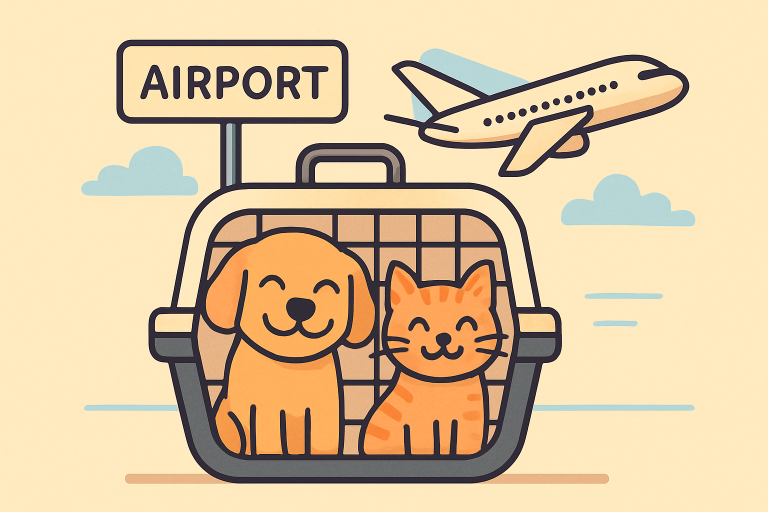Pet
Affordable Pet Air Transport Services: Safe Sky Travel Without the High Price

Introduction
Traveling with your furry companion shouldn’t mean spending a fortune or worrying endlessly about their well-being. With the increase in demand for pet-friendly travel solutions, it’s easier than ever to find reliable, budget-conscious ways to fly with your pet. Early preparation and informed decision-making are the keys to avoiding unnecessary stress and inflated costs. If you’re looking for a reputable and best pet transport service in New York City, planning is the best way to ensure you get quality care without an excessive price tag.
Knowing your options can make a world of difference in both your wallet and your pet’s comfort. From understanding airline requirements to evaluating specialized services, pet owners can take steps to ensure their pets’ safe transit. There’s no reason to compromise on quality or peace of mind when getting your beloved animal from point A to B.
Understanding Pet Air Transport Options
Navigating the choices for flying pets involves understanding suitability, costs, and the unique needs of your pet:
- In-Cabin Travel: The most convenient and affordable option for small pets, in-cabin travel allows animals to stay with you during the flight, provided they can fit comfortably under the seat in an airline-approved carrier. Most airlines charge an additional fee, typically around $125 one-way, and have specific rules for carrier dimensions and pet breed restrictions. Major airlines offer pet travel options with varying policies and costs, as outlined by CBS News.
- Cargo Hold: Medium and large pets must often travel in a climate-controlled cargo area. While generally safe, it’s essential to research the airline’s reputation for pet care, as costs and amenities can vary considerably. Some airlines have embargoes for specific routes and certain temperature-sensitive months, so it’s always best to check in advance.
- Private Pet Transport Services: For more specialized care, third-party companies offer tailored, often door-to-door solutions. These services can accommodate unique schedules, diverse health needs, or multi-pet households. While they tend to be pricier than commercial airlines, they significantly reduce the logistical challenges and risk of mishandling.
Factors Influencing Costs
Pet air travel expenses are influenced by a variety of factors, including:
- Distance and Destination: The longer the journey or the more remote the destination, the higher the base cost. International flights can include additional fees for customs clearance, veterinary health certificates, and quarantine regulations.
- Pet Size and Weight: Airlines charge based on the size of the crate and the total weight. Larger dogs and specialty breeds will almost always have higher associated fees.
- Airline Policies: Some carriers offer all-inclusive packages, while others have à la carte pricing that can add up quickly (e.g., crate rental, layover charges). Carefully review the fine print before booking.

Tips for Affordable Pet Air Travel
To avoid escalating costs, keep these budget-friendly strategies in mind:
- Book Early: Airline pet quotas fill up fast, especially during holidays or summer months. Booking early can secure your spot and sometimes lock in a lower rate.
- Compare Airlines: Not all carriers treat pets equally; some offer better pricing, more generous weight limits, or discounted “pets in cabin” options. Research and compare policies before committing.
- Utilize Pet Transport Services: Third-party services can be a cost-effective alternative, especially when dealing with complex routes or tight timing.
Safety Considerations
Ensuring your pet’s safety during air travel is the top concern for any pet parent. Start by arranging a health check with your veterinarian to confirm that your pet is fit for travel and has received all necessary vaccinations. Prepare an airline-approved crate that’s well-ventilated, secure, and large enough for the pet to stand, turn, and lie down comfortably. According to the ASPCA’s travel safety tips, it’s also essential to help your pet get accustomed to the crate well before the trip. It’s wise to avoid feeding your pet within four hours of departure, but ensure water is available to keep them hydrated throughout the journey. Label the crate with your pet’s information, your contact details, and a “Live Animal” sign for better visibility by handling staff.
Conclusion
Securing affordable pet air transport hinges on early planning, a solid understanding of your options, and prioritizing both price and safety. Whether flying with your pet in-cabin or using specialized services, there are options suited for every need and budget. Researching airlines, leveraging competitive transport bids, and sticking to your budget can ensure a safe journey without overspending.
